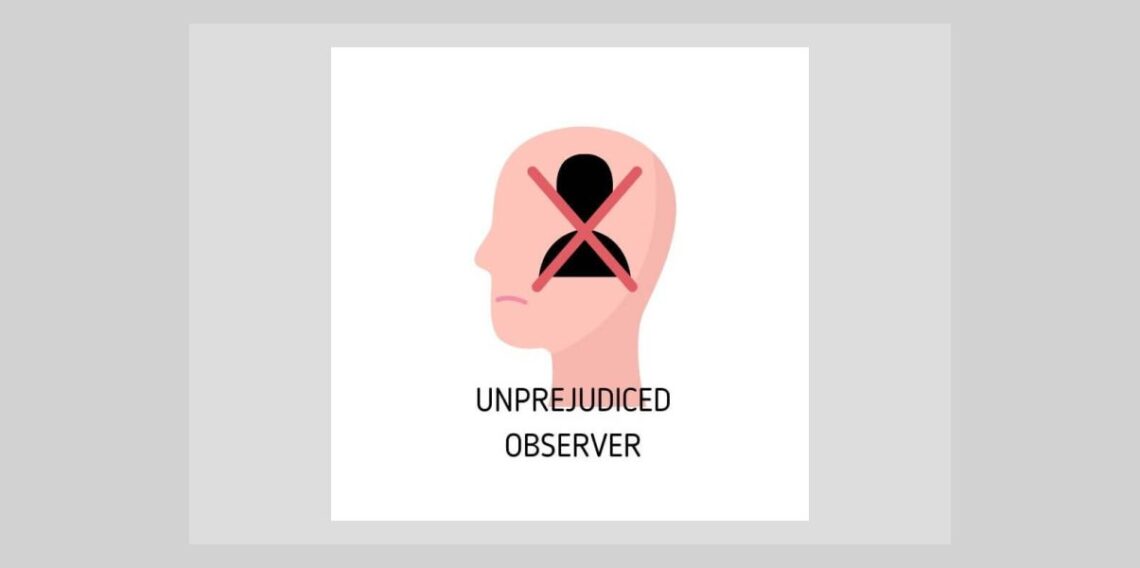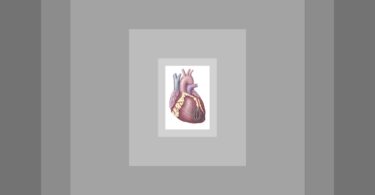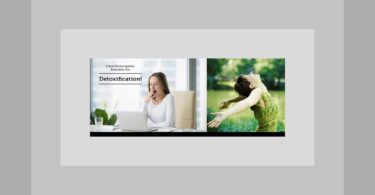A keen sense of observation is an important quality that a Homoeopath must possess. The general study of diseases with their signs and symptoms is important. But even in the observation of the common symptoms and their diseases, the Homoeopath must continue to look for a peculiar difference in each individual patient. Even in an epidemic, the true homoeopathic physician must study these diseases in an individual manner. Every disease manifests itself in a peculiar way in each patient.
The Physician must very intelligently gather all the symptoms the patient expresses, observe for himself those he can perceive, and also ask the attendants of the patient about any other relevant details pertaining to the sickness of the patient. The past and the present must both be given the same importance. In many cases, the causation becomes the most important prescribing factor, and in others it is the desires and aversions, and in some, the modalities.
For instance, an epidemic of measles may produce common symptoms of a cold and coryza, fever, and rashes, etc. But for a keen, observant Homoeopath, the unique individual’s symptoms may be in the mind. Is the child restless, or peaceful, crying and whinny, or listless, lying quietly? In some cases the patient may find the desire to be uncovered; in others, the child may be shivering and cold. These are the unique manifestations produced by the inner life of an individual.
The observations regarding these individual pictures have very little or no meaning until the attending Homoeopath is well versed with the provings of various drugs or a detailed picture knowledge of Materia Medica. After all, at the end of the case taking process, the sensitive Homoeopath has to match these two pictures based on observation. The medicines capable of curing a case should be potent enough to produce an identical picture in a healthy person. Hence, the knowledge about one picture is not sufficient; it is ultimately the matching of these two pictures together which affects the cure. The mind, the human computer and repertory, has to be continuously programmed with latent and new observations. Nothing that a Homoeopath listens to or observes is meaningless. As in a case of some hypersensitive people, they prove a unique symptom which the majority of other people do not; similarly, a rare symptom in a patient should lead a keen Homoeopath to work harder and find, under the rarest rubrics of the repertory, this unique symptom. In fact, the more rare and unique a symptom, the more individual and characteristic the patient is. The pursuit of a Homoeopath is to find means on which to differentiate one patient from the other. For instance, getting a headache from smelling a rose is a very unique symptom, but there are people who have confirmed this symptom. So, a continuous study of Materia Medica and a constant effort to enlarge the spectrum of observation in patients and nature is the incessant task of a Homoeopath.
Vertigo due to cervical spondylosis may be manifested in different patients in different forms: vertigo with nausea, vertigo with ringing in the ears, vertigo with palpitations, etc. The modalities may be different too. In one patient it may be worse on walking, in another from lying down, and still another from changing sides in bed. Not only that, but if we enquire further we will find one is worse by turning to the right and in another aggravates when turning to the left. These are the peculiar symptoms and observations which a Homoeopathic Healer has to make. The disease title does not mean anything to him.
In the treatment of chronic diseases, quite frequently the patient does not give us a clear picture. Either the patient does not think it of any importance and cannot connect it with the present sickness, or he may actually forget about it. A Homoeopath gifted with a keen sense of observation and analysis should not regard these as unimportant or invalid. A patient may never report to us about the alternating character of his disease. He may feel that an attack of asthma has nothing to do with the urticaria or similar skin allergy. Still, it is for us to find out the relationship between these two complaints.
In a patient suffering from eczema or psoriasis, persistent suppression with local ointments may be responsible for the onset of an asthmatic problem. When we are able to establish the relationship between diseases from the past and present, the diet, and general habits of the patient and their influence on the present ill health, a lot has already been done. Then the medicine is just an excuse. The clarity about the disease and what is to be cured in the patient are the two vital points. With the knowledge of medicine we can very intelligently deal with them. However, knowledge or medicine alone cannot help a Homoeopath to restore health. It is a combination of the knowledge about the sickness, who is sick, knowledge about the drug action, the Materia Medica, and how to implement it for the patient that culminates natural health.
It is interesting to watch and observe the patients homoeopathically. It is a fascinating art which deals with genuine and sometimes artificial expressions of the patient. Here is a good word of caution for the Homoeopaths to distinguish what is and what is not to be believed. An exaggerated picture about the soft and yielding behaviour of a patient may lead you to think of Pulsatilla, where in all reality she may be a closed person of a Natrium Muiatricum type. Try to catch glimpses of such a patient right from the time they enter your office. See clearly and carefully how she behaves towards her husband or her friend, before she poses to you formally as a patient. She may impress you by her pseudo kind nature and gentleness. Under no circumstances should a prejudiced idea be formed about this patient. Try to talk to her about something in general, not pertaining to her sickness or personality, which may hurt her ego and she may be forced to project a false picture about her nature and about herself. We must try to find out about her past love relationships in life and establish why they broke. On interrogation, if we find that she was the first one to walk out, then in a way we can have a rough idea about her real character and temperament.
Gradually, we can make a quiet access into her closed self. It is hard to discuss anything with such patients, especially when trying to find their mental symptoms. This closeness of mind and inner self is in itself a disease and the intelligent homoeopathic observer has to tackle such constitutions with utmost caution and wisdom. The patient has to be observed whilst unaware and without provocation. In the treatment of chronic physical ailments where the patient has been dependant on various palliative methods, he has to be given enough confidence so that he realizes the value of an actual cure himself. The patient has to be educated by the attending Homoeopath. The physician should be able to explain to the patient in detail about the grave consequences of the shallow and palliative methods. For example, a patient suffering from Psora who has been applying local ointments for years has to be informed how the skin reflected the internal disorders. In all reality, it was not a skin problem and removing these manifestations of an internal disorder by means of external applications was pushing the disease even deeper.
Rarely does a patient confess or connect the suppression of an infantile eczema to a kind of asthma in the same child. When the patients become aware of these consequences they will cooperate with you, particularly during the Homoeopathic aggravation, when generally many of the physical symptoms are worse.
This, in my opinion, is the greatest knowledge about the patient. Under no circumstances should an astute homoeopathic observer feel bored or unconcerned about what the patient says. She may mindlessly speak, may jump from one topic to another, or even have some funny sounding obsessions. All these put together make the perfect case taking. To lend an ear to what the inside force of the patient wishes to express, is also a form of compassion.
It is not only the mental symptoms which form the totality of symptoms. Sometimes in physical ailments we have to observe how a child suffering from Bronchi Pneumonia feels better. Maybe when the mother carries the child on her shoulder, the child feels comfortable. It is not that the child is better by being carried in general, but it is only in a particular position. It is probably the pressure on the chest of the child against the shoulder of the mother which gives him relief. So immediately with other symptoms, we may be able to prescribe a dose of Bryonia to this child. Observation in children, like in animals is difficult, because they cannot express or complain about their suffering. But a true practitioner of homoeopathic science can immediately observe when an attack occurs. The child curls up the legs to his abdomen or wants to stretch them, thus helping the physician to choose between Colocynth and Dioscorea.
A woman around the time of menopause visits a Homoeopath for the treatment of extreme mental oppression. Her continuous accusations regarding the husband, and weeping when telling her symptoms, contribute a lot in making the difficult case taking somewhat easier. But then this patient sits with her legs crossed. She is not going to mention this because she thinks it is a part of habit. We cannot take or leave out anything as a normal habit of the patient. We must try to verify as to why she sits in this particular manner. The attending doctor may ask her to sit with the legs uncrossed, and talk about other things: e.g., regarding the family, the occupation of her husband, and so on. During this period, the keen eye should be an the legs of this patient, and if we find her slowly slipping back into the former cross legged position we have found her particular symptom!
This lady may unconsciously go back into the former cross legged position. On further interrogation, she may complain about her menstruation problem and pelvic weakness. Hence, in this case we find Sepia clearly indicated. It has often been seen in practice that one prominent symptom leads to other characteristic symptoms of the same remedy.
In the treatment of chronic diseases where a patient comes to us frustrated, and tired of being under different types of treatments, the percentage of hope for a recovery is very little. It is the duty of a Homoeopath to be friendly and kind to such patients. It is not the medicine alone that cures, but also the positive acceptance on the part of the patient plays a great role in this direction. By no means does this indicate that a patient with a negative and pessimistic approach to life cannot be helped.
But wherever it is possible, direct the positive energy of the patient towards the indicated remedy. Whatever a Homoeopath can do to minimise the pessimism in the patient, helps the response to the medicine and health is rapidly restored.
There are many different views about the general counselling of the patient. My personal belief is that the homoeopathic physician, who believes in affecting a true natural cure, has to be as near to the personal life and inner self of the patient as possible. A formal case taking is bound to miss some of the original characteristics of the patients, because it is a natural instinct to present the best side of one’s self in a new place or to a new person. This pseudo picture about the character and temperament of the patient might lead us to prescribe a wrong medicine and fail miserably. The best homoeopathic prescription comes out when the unprejudiced observer knows the sickness, the characteristics of the patient and the remedy to restore health. When this wonderful science is applied compassionately for the welfare of suffering humanity, many of the so-called “incurable diseases” can be annihilated in their fullest existence. Hard work and compassion still reign supreme in any type of healing.
Furthermore, we as Homoeopaths have to realise the purpose of our birth and existence. All the inhabitants of the universe are healers in their own way and on their own level. The Homoeopaths of the universe should not be easily impressed by the title or the name of a disease. A disease may become incurable or surgical by other schools of medicine. At one time or the other we have all experienced in our practice a tumour, a cyst or a calcaneum spur which have been declared not treatable by some, only operable. But they can be totally cured by a single dose of indicated Homoeopathic remedy. Therefore, the name of the disease or its diagnosis by other schools of medicine should not discourage a true Homoeopath to treat homoeopathically. After all, it is not a particular organ or part which is diseased; it is the man as a whole.
When a Homoeopath can go into the deeper layers of mankind and understand the actual vibrations and alarm signals of the deranged inner man of the patient, nothing but good health can remain. The disease will be removed in its total extent. If the actual sense of my feelings is understood, then my message will be well accepted.






sir,
i am greatful to you that you have nicely explained the importance of observation in case taking.although it is evry where said in homoeopathy that the totality of symptomes is vital, but self understanding is one thing and how to make others understand is really an art which you have.please go on writting so that so many others readers like me ,may also get benifitted by your vast knowledge.thanks a lot .
with regards.
sunil kant
Very true! Observations are the stepping stones to solving cases. But i’ve been to some of today’s clinics, where the doc does not allow the patient more than a minute or so in it! Just a look at the tongue and the prescription for the month is written and you get the next appointment at the reception!
DEAR DR,
ONE IS EXAMINATION AND THE OTHER IS OBSERVATION. EXAMINATION OF A PATIENT IS BASED ON A PRESCRIBED PRINCIPLES OF EXAMINATION. FOR EXAMPLE,NATURE OF HIS COMPLAINTS,HIS LOOKS,HIS TONGUE, HIS EYES, HIS THROAT, HIS TEMPERATURE, HIS PULSE, HIS HEART BEATS, HIS SKIN TEXTURE, HIS CHEST, BLOOD PRESSURE ETC AND PARTICULARLY THOSE PORTIONS WHICH ARE IMPORTANT TO HIS DISEASE. OBSERVATION IS THAT WE NOTICE IN PATIENT FROM HIS TALKS, BEHAVIOUR, WAY OF WALKING ETC WITHOUT TELLING HIM. IT IS CORRECT THAT OBSERVATION ADDS TO THE TOTALITY OF SYMPTOMS. SOME TIME OBSERVATION ALONE GIVES US CLUE TO CORRECT REMEDY REQUIRED FOR CURING A PATIENT. IT IS WRONG ALSO FOR A DR NOT TO ASSIGN NAME OF DISEASE THOUGH IT IS NOT IMPORTANT FOR TREATMENT BY HOMEOPATHY. WHILE WRITING A PRESCRIPTION OR MEDICAL CERTIFICATE WE HAVE TO MENTION THE NAME OF THE DISEASE AND NOT SEVERAL SYMPTOMS.
THANKS
DR SHEKHAR